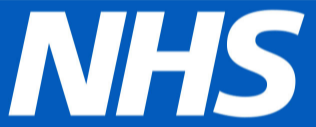Downloads
path: downloads
- anaphylaxis -adult and child – checked jan 2023.pdf
- asthma acute – adult and children – checked 2023.docx
- basic life support – adult – checked jan 2023.pdf
- basic life support – infant child – checked jan 2023.pdf
- basic life support and defibrillation – adult – checked jan 2023.pdf
- basic life support and defibrillation – pregnant – checked july 2021 (follow this or basic life support adults).pdf
- chest pain – suspected MI – checked aug 2023.docx
- choking – adult – checked july 2023.pdf
- choking – infant child – checked july 2023.pdf
- fits – seizures – checked july2023.docx
- hypoglycaemia – checked july 2023.docx
ASHCROFT LEADS
- Doctor: Dr Ramesh Mehay
- Nurse: Mel Greenwood
- Admin: Carole Middleton
DATE REVIEWED:
Sept 2023
DATE OF NEXT REVIEW:
Sept 2024
The Policy/Protocol
- A list of the medical emergencies and what to do can be found in the DOWNLOADS box above.
- This page will be reviewed every 18 months to ensure all advice is current and up to date.
- A laminated copy of each of the above documents will be available in EVERY consulting room – pinned onto the wall board.
- In addition, there will be a copy in RECEPTION, the COFFEE AREA DOWNSTAIRS and next to the EMERGENCY TROLLEY.
WHY HAVE WE MADE THESE GUIDES
During emergencies, some of the doctors have noticed that the emergency protocols are often ill defined on the world wide web – even on UK specific reputable medical websites. Either the presentation is poor and not digestible (eg. over wordy) or parts of a guideline are vague. And during an emergency, you want the information
- to be available quickly
- to be able to be read at a glance
- to be very clear on the variants in the treatment pathway depending clinical scenario
So, this is what our summary documents do. Each guideline is mostly on one side of A4. Others are on a maximum 3 sides of A4. When there is more than one page, it is the FIRST page that summarises everything. It is this first page that will only need referring to during the initial stages of managing the patient. And this is why it is kept relatively light in terms of information – only providing the ESSENTIAL key points needed right there and then. The other two pages can then be read when the panic has settled down a little.
If you have any suggestions, please let Dr Ramesh Mehay know.
